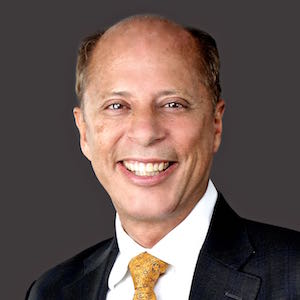The Obvious (?) Link Between Diversity And Innovation
Expert: Andrés TapiaCurator: Janett Egber
Andrés T. Tapia is a senior client partner at Korn Ferry, a global leadership and talent consultancy. He serves clients worldwide as a strategist and c-suite advisor. He is also a thought leader, writer, and public speaker. He lives in Chicago and grew up in Lima, Perú.
01 // What does diversity actually mean?
02 // How does (the lack of) diversity impact innovation?
03 // What metrics can be used to measure diversity on innovation?
04 // What would you like to see changing in the next 3 to 5 years?
// Summary
Andrés Tapia sat down with curator Janet Egbar to help us shed some light on the true meaning of diversity and the tangible ways it can foster and propel innovation when harnessed properly.
Go beyond “physical” diversity
Much has been said about including different genders, ethnicities and minorities into the hiring mix, but what we really need, says Andrés, is a multi-layered definition of diversity. Let’s look deeper at the fundamental intention of diversity: gathering people with different backgrounds, vocabularies, perspectives and processes.
A corporate entity might, for example, be proud of having employees from aboriginal communities. But what if they were all raised in the same region, went to a same college or gathered similar work experience along the way? We have to ask if we then are truly fostering difference. To find the answer, ask this one question, says Andrés:
“What is it about a particular way of thinking that is going to be in contrast to the others around me?”
Start with diversity, aim for inclusion
So you’ve hired a diverse team and you feel pretty good about it. But all those brilliant new minds won’t start truly innovating until they have the structure, the space and the autonomy to speak out. According to Andre, there are three main pillars to activating diversity through inclusion.
1. Purposefully invite diverse voices to pipe up
It can be intimidating to speak up in an environment where the status quo is to cut into a conversation to make a point. Think carefully about how to solicit opinions and create a safe space.
2. Listen to those voices with respect and interest
Few things shut down innovation like an eyeroll, a chuckle or someone speaking over your idea. To generating fresh, new ideas, foster a sense of respect and active listening.
3. Genuinely contemplate others’ ideas
Beyond paying lip service to someone’s idea, it’s crucial to take the time to truly consider it, being curious enough to explore its logic, thought-process and origin.
Choose metrics wisely
Current diversity strategies overemphasize representation, a vital but Lagging indicator, telling us the result of whatever we’ve already been doing. A Leading indicator, on the other hand, allows us to figure out if we’re on track and achieving goals. We need to flip it, says Andrés, and look at the diversity of our high-potential pool, of feeder pools that are entry-level, mid-level and entering into positions of authority and influence.
Take cross-cultural steps
To Andrés, diversity isn’t about an attitude of openness anymore, it’s about a capability and a competence. True cross-cultural agility involves three crucial phases.
1. It’s all about me: Understand the framework of our own experiences, beliefs, assumptions and preferences – little can grow without self-awareness.
2. It’s all about them: Compare and contrast – try to evaluate and understand differences in experience and vision.
3. It’s all about us: Ask what are we going to do together and how are we going to best leverage our differences to spark new energy, ideas and innovation?
The next step, says Andrés, is carrying some of that understanding of diversity out of the corporate walls and into society.
“Diversity is the mix. Inclusion is making the mix work.”
Diversity in hospitality
As demographics shifted and women took up a bigger slice of the business travel pie, many hotels took years to understand why their sales were dropping. While men stayed at hotels without finding any obvious flaws, women hoped for a step in the shower to shave their legs and toiletterie kits that suited their needs.
Those in the hospitality industry who were able to listen to the market and diversify their teams were more likely to respond to new demand, innovate and thrive.


